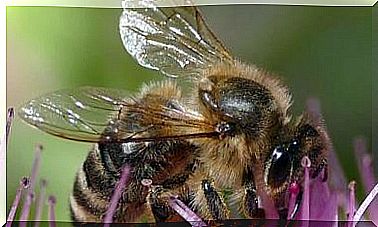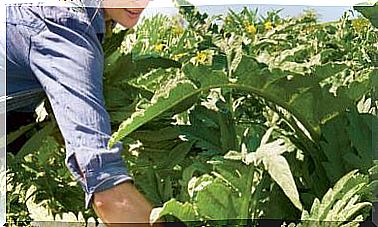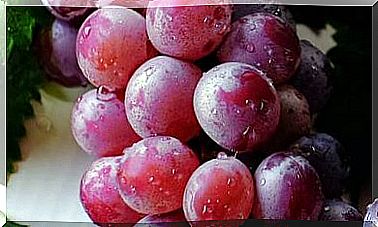Plant-based Diet, Healthier For You And The Planet
The consumption of meat and products of distant origin is harmful to health and the environment. The alternative: eat rich vegetables and fruits from local farmers

Eighteen times less land, ten times less water, nine times less fuel, twelve times less fertilizer and ten times less pesticides are needed to obtain a kilogram of protein from beans than to produce a kilo of protein from beef. If instead of beans we make the comparison with chicken and eggs, the veal is still six times less efficient.
These are data from the study published in the journal Public Health Nutrition in 2014 on the environmental cost of different protein sources. Reducing, therefore, the consumption of food of animal origin is a powerful weapon in the fight for a more just and sustainable world. To which should be added the positive impact that such a decision would have on our health, since if the investigations carried out conclude something and all public health organizations agree with something, it is that the consumption of foods of plant origin should be increased in our diet.
Each kilo of beef needs 15,400 liters of water in its production. One kilo of legumes, only about 5,000 liters
The ecological footprint is the concept used to measure the environmental impact of human activities. The ecological footprint relates the demand for natural resources with the planet’s ability to compensate and restore them. To do this, it takes into account both the land and water necessary to produce these resources, and also the emission of CO2, as well as the ability to assimilate the waste produced. It is a basic indicator of sustainability, because it evaluates lifestyles and human activities in relation to their impact on the earth and its capacity for regeneration.
The earth is on the edge
According to the Living Planet report of the Global Footprint Network, the average ecological footprint of human beings today is 2.6 global hectares (a measure that expresses the footprint) per person, when the planet’s capacity is only 1.8.
- We consume resources and generate waste far beyond the capacity of the Earth. We would need a planet and a half to meet the current demand, and almost four planets if we were all Americans. The ecological footprint has multiplied by 2.5 since the 1960s. If we continue on this path, we are heading towards the depletion of natural resources and consequences such as the melting of the polar ice cap.
- A problem for the rich: although it is a global average, if we look at specific countries we can see that the industrialized countries have a much larger footprint than that of developing areas. The first places are Kuwait, Qatar and the United Arab Emirates, followed by Denmark and Belgium. The United States ranks eighth and Spain forty, with an average ecological footprint of some 4.3 global hectares per inhabitant, well above the world average. In the tail we find Palestine, Haiti, Pakistan or Eritrea. These are data that reflect an unfair reality.
- A global impact: the report of the FAO – the UN food organization – entitled The Long Shadow of Cattle begins like this: «This document has been deliberately titled The Long Shadow of Cattle looking for a way to get the attention of technicians and the general public on the great responsibility that animal production has in climate change, in atmospheric pollution, in the degradation of land, soil and water, and in the reduction of biodiversity ”.
The cost of meat
FAO’s work describes the situation of world livestock production and its impact on the environment, on the advance of climate change, on the contamination of aquifers, on biodiversity and even on political and social issues. It is this report from which the well-known and chilling fact is extracted that livestock farming produces more greenhouse gases than all means of transport combined.
- Kill the trees: The report also points to the livestock industry as responsible for much of the deforestation and loss of biodiversity, as the land dedicated to fodder production represents a third of the world’s agricultural land.
- It dirties and wastes the water: it is also the biggest contributor to water pollution thanks to the waste of the animals themselves, antibiotics, hormones, chemicals used in tanneries … In short, it sets the stage of a production for all lights unsustainable but spurred by the increasing demand for meat products in the world. The livestock industry also requires a large amount of water to feed an animal. How much are we talking about? According to the Water Footprint Network, each kilo of veal requires 15,400 liters of water. A kilo of legumes needs, on the other hand, between 4,000 and 5,000 liters. And water is a scarce commodity that we cannot waste.
- The climate changes: food travels an average of 3,827 km before reaching our plate and produces more than four tons of CO2 – one of the gases that warms the atmosphere -, according to the report Food kilometers, by Friends of the Earth. Those that travel the most are fish, crustaceans and mollusks, followed by feed and coffee, tea and spices, and a little below, legumes and fruits. It is a good reason to look at the origin of the food and choose those that have been produced closer.
The vegetable alternative
Are there alternatives to this waste of resources and the disasters caused by this food model? Yes, but they require lifestyle changes. The vegan diet emits half as much CO 2 as the carnivorous diet. This difference is enough to encourage us to modify our menu.
The 2015 US official guidelines advise for the first time for environmental and health reasons. The planet and we need non-toxic, seasonal, local food, without unnecessary packaging. That they have been obtained in a sustainable way and without exploitation. And may there be food for everyone, now and in the future.









